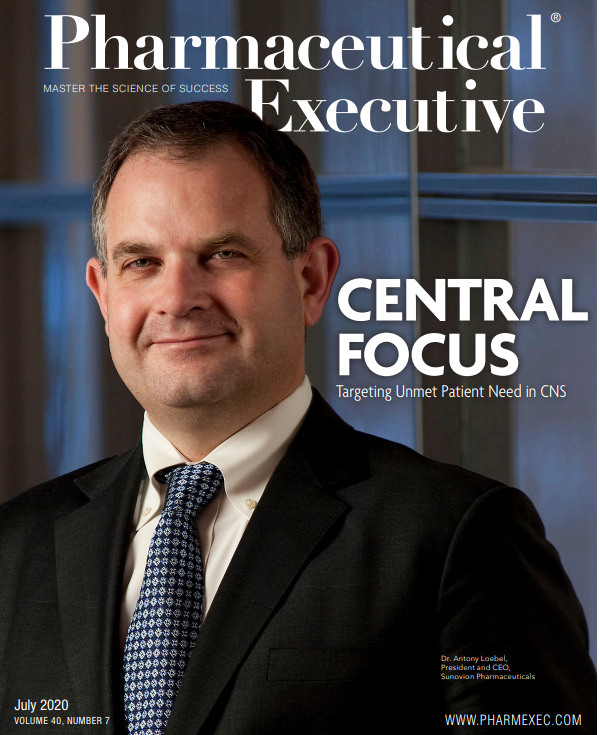- Sustainability
- DE&I
- Pandemic
- Finance
- Legal
- Technology
- Regulatory
- Global
- Pricing
- Strategy
- R&D/Clinical Trials
- Opinion
- Executive Roundtable
- Sales & Marketing
- Executive Profiles
- Leadership
- Market Access
- Patient Engagement
- Supply Chain
- Industry Trends
Will COVID-19 Usher in a New Era in Pharma Marketing?
Embracing expanded digital models key to future ROI.
Barbara Ryan

As COVID-19 takes the global healthcare ecosystem hostage, biopharma companies, healthcare providers (HCPs), and patients have been forced into new models of accessing

care. Brick and mortar visits are being supplemented by digital tactics and a reluctance to adopt telemedicine has been replaced by the necessity to do so. Companies that are typically competitors are collaborating on solutions in the form of testing, contact tracing, and clinical development of vaccines and therapeutics. It’s fantastic to see industry leaders take the stage to educate the public on the pandemic, what is means, best practices, and ultimately how we will defeat it.
We have seen an explosion in telehealth with over one million Medicare patients now using the technology. Regulatory flexibility is paving the way for providers and pharma to embrace these new models. The train has left the station, so these trends are sure to endure.
Pharma reps have always been challenged by less access to the HCP than desired, but these face-to-face encounters have been completely extinguished during the fight against the pandemic. Marketing initiatives have had to be cleverly revamped with an increased focus on digital and social media campaigns directed at patients and HCPs; many companies are reporting great success with these initiatives.
Of particular note are some biopharma companies who have had to launch their first commercial products ever in the age of COVID-19. Overnight, all carefully laid plans were made obsolete by a pandemic never contemplated during their design. Notable among the companies who had to pivot quickly and dramatically on these efforts are Esperion, with two novel cholesterol busters, Nexletol and Nexlizet, and Horizon with its rare eye disease drug, Tepezza. Gelesis, a biotech, upended the traditional model by partnering with telehealth provider Ro to launch its prescription weight management product, Plenity, in the middle of COVID-19. It’s fair to say the commercial model has likely changed forever with a blend of traditional face-to-face interactions, digital campaigns, and an increased social media presence. Regulatory and reimbursement efforts are complying with initiatives underway in efforts to advance the use of text, mobile phones, wearables, and even chatbots for synchronous communication between patients and providers.
They say necessity is the mother of all invention: I remember when pharma was suffering from an onslaught of generic competition and commensurate declines in revenues. Analysts were slashing earnings forecasts and the stocks traded like high-yielding bonds. Drug companies during more prosperous times had built armies of sales forces seeking unassailable scale with ever increasing ROIs…until that was no longer the case. Pfizer, the 800-pound gorilla that gated the level of competition led by CEO Jeff Kindler, took the bold and tough decision to cut their massive sales force by 40%. In what was a huge relief for all in the industry, every other leading pharma company followed suit and cut theirs as well.
Overnight, the era of massive field forces supplemented by rent-a-reps came to an end. Investors cheered, analyst forecasts rose, and the stocks took off.
I see the current environment ushering in similarly dramatic changes in the model. What better way to scale than with a digital footprint?
Biopharma leaders should be challenging their organizations to find the silver lining in the pandemic to develop new more efficient models for future and sustainable commercial success. Winning models will have to focus on a strong value proposition for the physician, stellar patient experience for the user, and a proven ROI for the payer.
Digital is no longer an enabling technology but a necessary and integral part of the model. Could these new blended commercial models lead to a surround-sound effect that could sustain the healthy returns required to manage costly, and risky, R&D efforts?
Is your organization taking advantage of the opportunity to change the status quo and innovate in the age of COVID?
Barbara Ryan is Founder, Barbara Ryan Advisors, and a member of Pharm Exec’s Editorial Advisory Board

Transforming Cancer Care: Data, AI, and Patient-Centered Care
July 20th 2023Join us as Mohit Manrao, SVP and head of US oncology at AstraZeneca, shares his patient-centered approach to transforming cancer care, bridging the gap between innovative science and tangible patient outcomes across all populations on a global scale.
